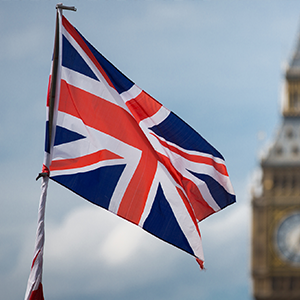
Every country in the world has a flag that represents the people, flying high on the top of builds, landmarks and for the rest of the globe to see. But, some flags aren’t just made up of random colours and designs that somebody threw together; they are based on parts of that country’s culture, history or even by legend.
Every flag tells a unique and interesting story. Let’s have a look at a few of the most fascinating flags from around the world!

Flag of Denmark
The flag of Denmark or the Dannebrog is thought to be the oldest flag in the world. It has a red background with a white Scandinavian cross and legend has it that it made a miraculous first appearance way back in the 13th century. As the story goes, the Dannebrog fell from the sky during the Lyndanise battle in June 1219 and landed with a Danish archbishop. A voice said that ‘when you raise this banner again your enemies, they will yield before you’. The Dannebrog was waved by the King and they went on to victory against the Estonians in battle. Since then, the flag has been used as the Danish flag and has even inspired many other Scandinavian flag designs.

Flag of the United Kingdom
The British flag or the Union Flag is often seen in fashion, as well as flying high around the UK and even across the world. It is often nicknames the Union Jack; however, this is the name when it is flow on a ship. The design dates back from 1801 and incorporates all of the countries in the UK, except for Wales, since they were part of England when it was created. The red cross of Saint George is present, who was the patron saint of England, as well as the white edging and cross of St Patrick, the patron saint of Ireland. The blue represents the Saltire of Saint Andrew, who was the patron saint of Scotland. Altogether, this design creates the famous flag we see today. While there were once talks to incorporate the Welsh dragon onto the design, there are no plans to for this to happen any time in the future.
Flag of Nepal
The first thing that stands out about the Flag of Nepal is the fact that it isn’t rectangular. In fact, it is the only non-quadrilateral flag in the world. This design was adopted in 1962 and the flag is created by two joined pennants. They are coloured crimson red to represent the rhododendron, which is the national flower of Nepal. This is bordered with blue to represent peace and harmony in the nation. It is debated whether the two triangular pennants are used to symbolise the Himalaya Mountains or a Nepalese pagoda; many locals have their own meaning. The sun and the moon are also featured inside the separate pennants. In sports, the Nepalese flag has a white background.

Flag of the United States of America
One of the most recognisable flags in the world has got to be the flag of the United States of America. This is called the Star-Spangled Banner, as well as enjoying the nicknames, Old Glory and The Stars and Stripes. This flag was actually designed by a 17 year old high school student in 1958 for a class project. At first he received a B- for his efforts; but this was changed to an A when it was chosen as the next national flag! There are thirteen red and white stripes on the flag, which represent the thirteen original colonies of the United States, once they had declared independence from Great Britain. There are also 50 white stars on a blue background for the current 50 states. Over the years, this number of stars has changed to accommodate new states. If the number of states increases in the future, it is likely the flag will change again.

Flag of Mozambique
The flag of Mozambique is most well known for being one of the only two countries in the world to have a firearm featured in their national flag. Of course, this has been debated for many years due to having a controversial AK-47 assault weapon with an attached bayonet on the flag, with several attempts being made to remove it. But despite this criticism, attempts to have it removed have been without success. The flag also features a tricolor of green, white-edged black and yellow at the bottom, with a red triangle on the hoist side. The AK-47 is featured on the isosceles triangle, as well as a yellow Marxist star and a book to symbolise education.




